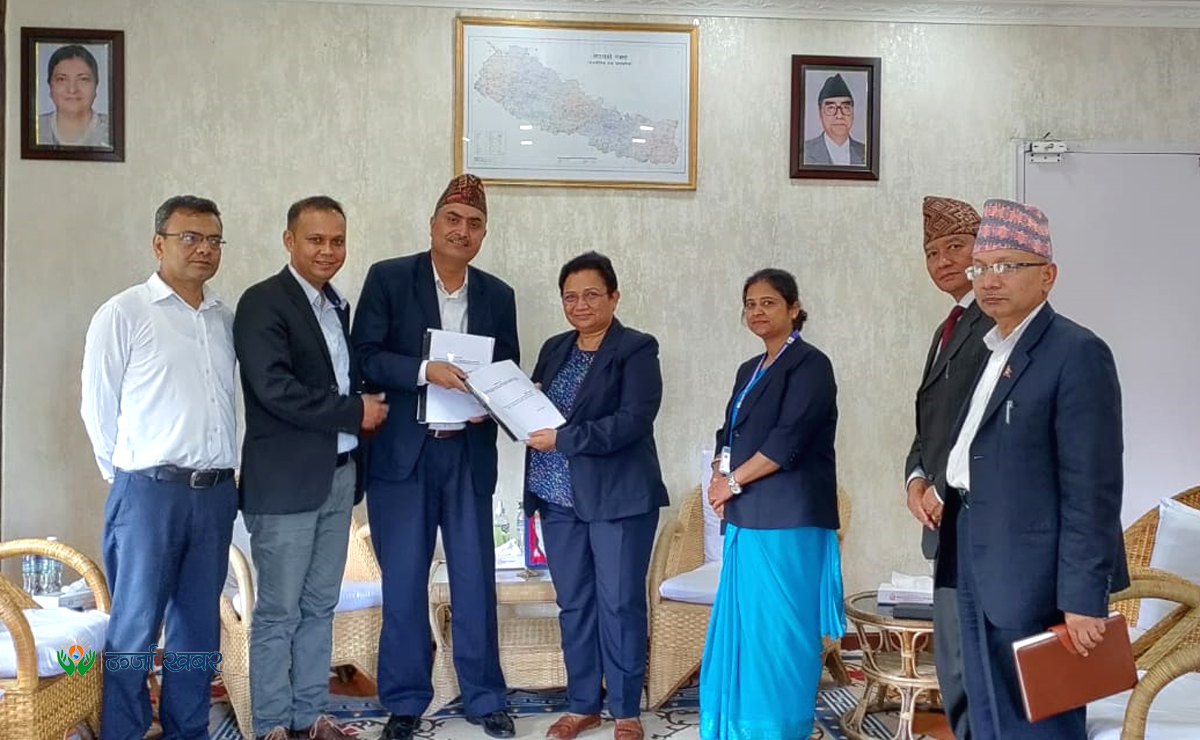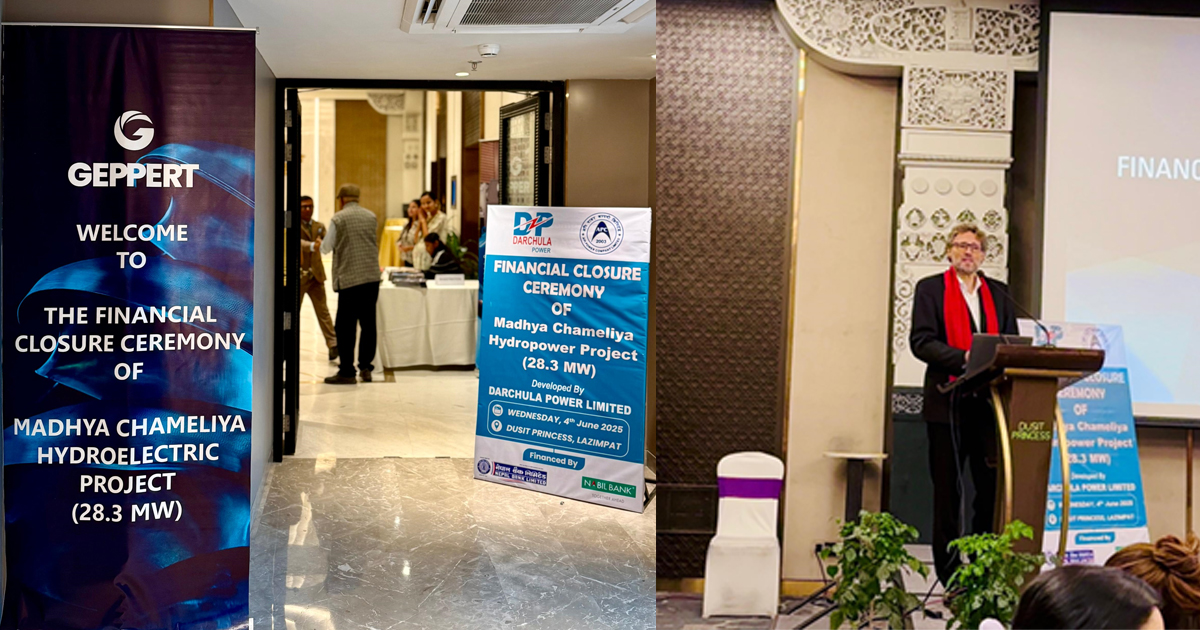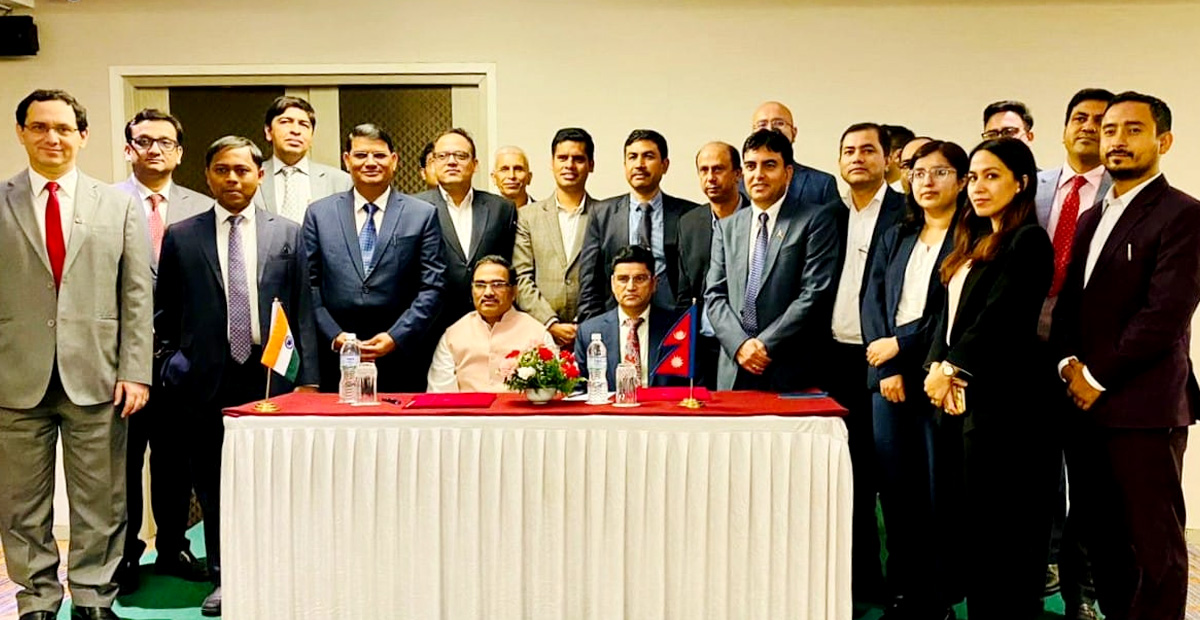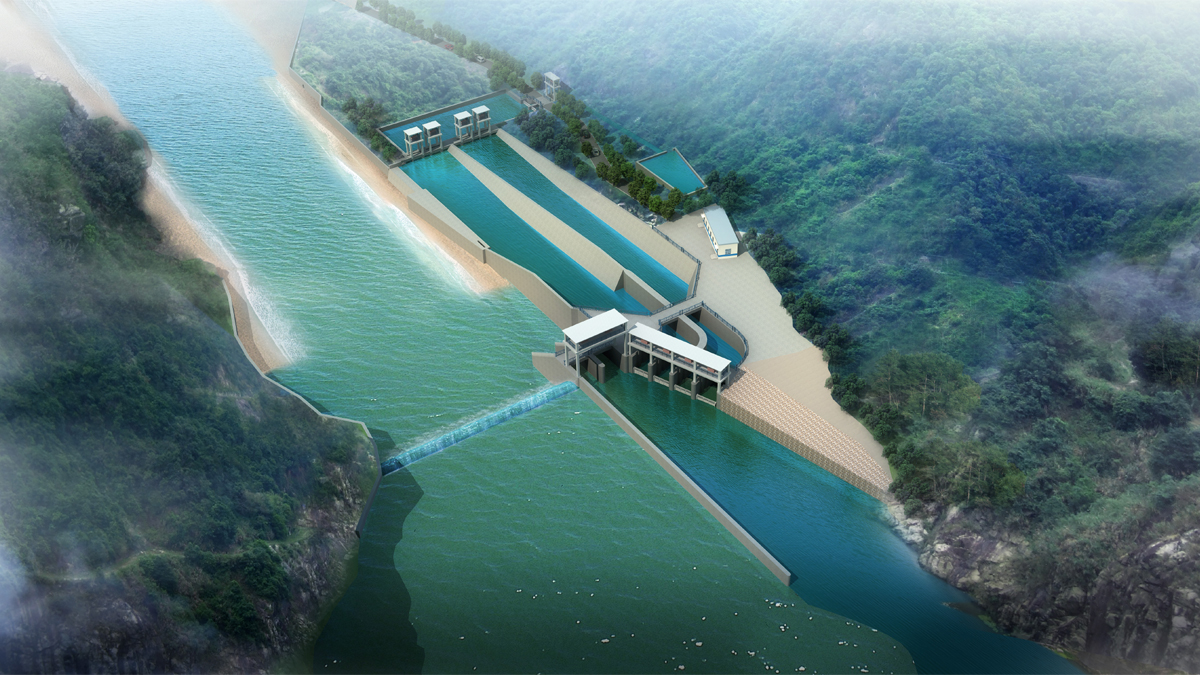Energy Update
It's the right time to produce chemical fertilizer using green hydrogen: A study panel

KATHMANDU, The government has been recommended installing a chemical fertilizer factory by producing green hydrogen inside the country.
A study panel that includes experts from Kathmandu University (KU) has pointed out the feasibility of establishing a chemical fertilizer factory with a production capacity of 200,000 tons of the agricultural input annually. The production plant is estimated to cost Rs 615 million.

The panel, in this regard, submitted its report to the Minister for Energy, Water Resources and Irrigation (MoEWRI) on Monday. On July 5, the government formed the panel to study the feasibility of installing a long-talked chemical fertilizer factory. The study team is led by Chiranjibi Chataut, joint-secretary of the Ministry of Energy, Water Resources and Irrigation.
The panel includes Dr Biraj Singh Thapa, team leader of Green Hydrogen, KU and a technical expert; Dr Bishnu Prasad Gautam, a policy expert; Kiran Gautam, a senior divisional engineer (SDE) at the Water and Energy Commission Secretariat and Babu Raj Adhikari, SDE of the MoEWRI as its members.

The panel has sought the need for devising short-term, medium-term and long-term plans to manufacture urea in the country. It also recommended the government develop necessary policies to carry out studies on international practices and emerging technologies in producing green hydrogen and chemical fertilizer.
There is growing talk citing the need to install a hydrogen-based fertilizer factory to ensure economic benefits to the countries like Nepal, which spend millions of rupees every year to import the agricultural input. In addition, it is also expected to help utilize efficiently domestically produced hydroelectricity.
Thapa of KU said many countries have already adopted policies to produce green hydrogen recently. “Nepal should also not delay in taking the necessary measures in this regard,” he added.
Chemical Fertilizer in Nepal and its role
The agricultural productivity of Nepal is one of the lowest in the world and chemical fertilizer is agreed as the most potent intervention required to increase productivity. While an optimum ratio of nitrogen, phosphorus, potash and sulphur is essential, nitrogen is required in the largest quantity. Accordingly, urea is the most demanded chemical fertilizer and hence this report focuses more on urea and sometimes uses the term chemical fertilizer and urea interchangeably. So far, Nepal does not have any chemical fertilizer production facility and all the demands are fulfilled through imports.
Establishment of a chemical fertilizer plant in Nepal has been discussed for a long time. The recent development of fertilizer production technology in the world and its widespread progression in our neighboring countries including India have indicated an unprecedentedly promising prospect for Nepal to begin producing its own chemical fertilizer.
Production of chemical fertilizer in Nepal without impacting the greenhouse gas emission
and foreign reliance is possible by utilizing the renewable resources of Nepal. Nepal has a huge potential to produce renewable electricity. Nepal Electricity Authority has estimated that the installed capacity of hydropower projects could exceed the business-as-usual forecasted demand by 3500 MW in 2028. Approximately 40% of this surplus electricity, which is 1400 MW, is sufficient for the production of 800,000 tons of urea annually.
Ammonia and carbon dioxide are the two primary materials needed to produce urea. Nitrogen and hydrogen, which are acquired from air and electrolysis, respectively, are combined to form ammonia. Carbon dioxide is obtained from the flue gas of industries, such as cement factories. The electrolysis and CO2 capture are both energy-intensive processes that present a unique opportunity for Nepal with its cheap hydropower electricity.
Similarly, cement industries are one of the rapidly growing industries in Nepal because of the proven and feasible limestone deposits of 420 million tons. The total CO2 emission from cement production is expected to increase up to 1540.7×103 metric tons by the year 2030 under the normal growth scenario. In this regard, utilizing the locally available raw materials for urea production could be a strategically beneficial pathway for the country.
Current Trends and Technological Advancement
Many countries still utilize the natural gas-based method since it is currently less expensive to produce hydrogen and carbon dioxide from it. Although the electrolysis-based method is expensive at present, its technology is advancing aggressively. Accordingly, it will be the cheapest option available in near future. On the other hand, the long-term operational costs for urea production based on natural gas is likely to increase in future because of the scarcity of fossil fuels, reaching even to extinction.
The possibility of producing green urea may soon become more viable due to technical
improvement, abundant renewable energy in Nepal awareness of GHG emissions, and the eventual extinction of natural gas. However, the viability would come about much more quickly if the Nepali government were to implement laws supporting green urea production.
Current research focuses on the development of chemical products and processes, mostly involving waste minimization, utilization of existing products with less toxic alternatives, and a shift toward renewable energy. Nitrogen fertilizers manufactured using electrolysis are developed, which can significantly decrease fossil energy input and GHG compared to the conventional production
Priorities for Nepal
The establishment of a chemical fertilizer factory has been given priority by the Government of Nepal (GoN) due to the ongoing fertilizer scarcity and growing uncertainties about food security. Realizing this context, the Nepal government has planned to move ahead for the establishment of green hydrogen and green urea based industries.
Significant technological advancements have rekindled interest in electrolysis-based urea plant over natural gas-based plant. Availability of fertilizer, enhancement of crop productivity, self-sustainability, and promotion of agricultural exports are the major drivers that encourage the need of establishment of chemical fertilizer. Green urea is one of the primary choices which has a significant potential to aid in the global transition to sustainable energy.
In the context of Nepal, the possibility of urea production from surplus reneweable electricity, and reduction of greenhouse gas emissions from the cement industries and meeting net-zero carbon emissions have furthered the promotion of electrolysis-based urea plant. The creation of policies up to this point has been primarily focused on providing subsidies to keep the nation's supply of fertilizer consistent and timely.
However, it is hardly making any headway in terms of economic development or bringing about any favourable adjustments in the availability of fertilizer or agricultural output. The production of urea using hydropower-powered electrolysis and CO2 collection from cement industry exhaust looks to be the most sustainable option in terms of raw material availability and sustainability.
The COVID-19 limitations have highlighted the need for independence, and the electrolysis-based approach offers a steady supply of raw materials. For these reasons, it is necessary to initiate the production of green urea in Nepal and launch a discussion among relevant stakeholders with a mutual interest in green urea. This report presents a study on the production of urea in the Nepalese context.
Policy and Legal and Regulation
The deregulation policy could not make any significant impact on improving supply and
quality control in the country and the subsidy was again reallocated with the formulation of the National Fertilizer Policy Revisited in 2009. The ongoing 15th periodic plan and ADS (Agriculture Development Strategy) have prioritized the need for the establishment of a fertilizer industry to end the fertilizer problem. The previous plans and policies were however focused to end the fertilizer problem through subsidies and barely focused on the establishment of industry. The way forward shows there are still lots of policy gaps and reformation needed to reach the time when Nepal will have its fertilizer plant.
Recommended Course for Policy Action
Nepal needs to take swift actions to prepare a regulatory framework to be in parity with other countries making legal progress in governing greed urea and benefitting from its use. A roadmap with short, medium and long-term plans are necessary to introduce green urea in Nepal. This study envisions that Nepal should enter into an era of chemical fertilizer production by 2030. Accordingly, this study has proposed a set of policy provisions that are anticipated to serve as the first draft for introducing the national policy on the production of chemical fertilizer in Nepal by promoting the production of green hydrogen.
Production of green hydrogen will not only facilitate the production of green urea but also ensure a huge market for the electricity produced from ample hydro and solar resources. Ultimately, this will help to attain many sustainable development goals by contributing to food and energy security, clean environment, employment opportunity, industrialization, economic prosperity and social justice.
Recommended Pilot Project
It is recommended to initiate the necessary activities to establish the first chemical fertilizer plant in Nepal with a production capacity up to 200 thousand Metric Ton per year. The green hydrogen methods with the transfer and adoption of technologies from the developed countries can demonstrate the feasibility of the pilot plant owing to the advances in associated technologies and to the benefits of hydropower electricity generated from renewable sources. Such a project can be established in a joint partnership with provincial and local governments to strengthen local engagement and ownership.
Diplomatic channels can be utilized to seek support on technology and equipment from the countries assisting Nepal in clean infrastructure development projects. Land, feedstock resources, and basic infrastructure should be arranged by the government sector. Policy, regulations, and financial support should be facilitated by the federal government. Through an indicative costing assessment, the total cost of such projects has been estimated to be 615 million USD
Conversation
- Info. Dept. Reg. No. : 254/073/74
- Telephone : +977-1-5321303
- Email : [email protected]














